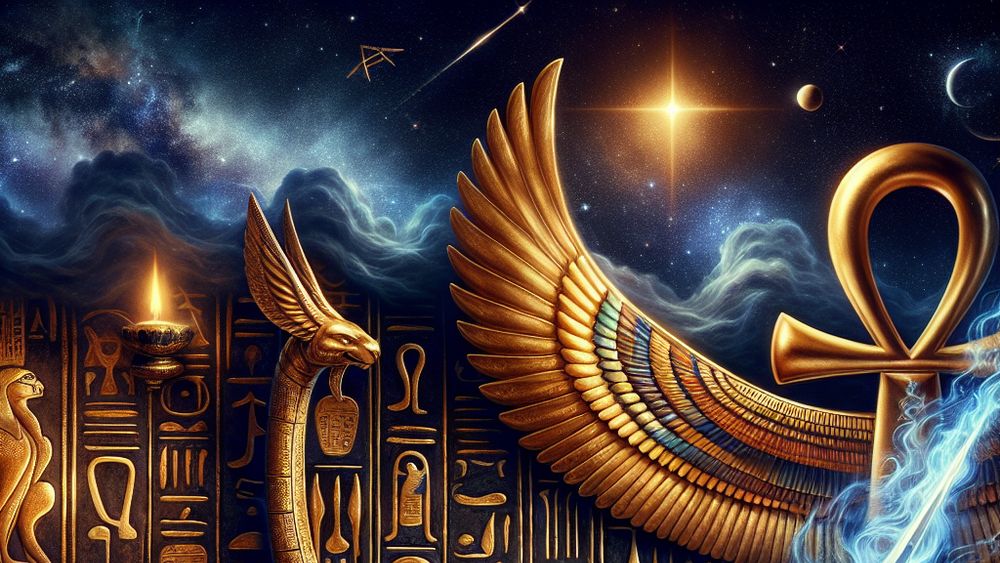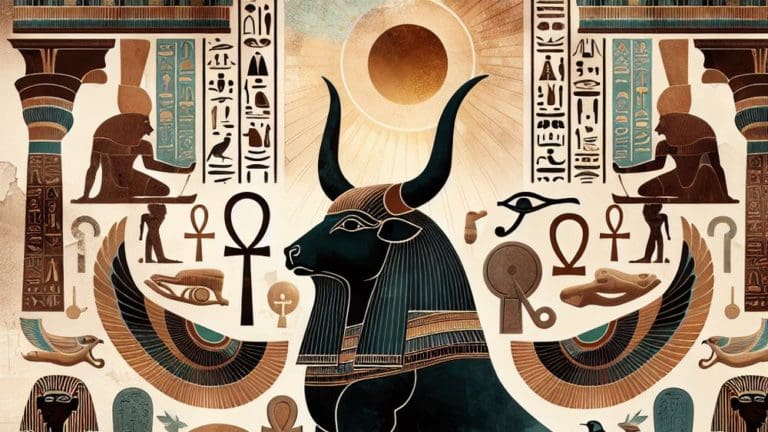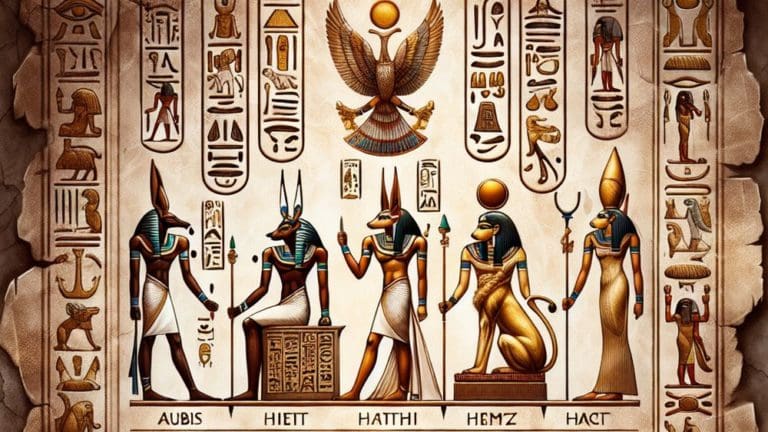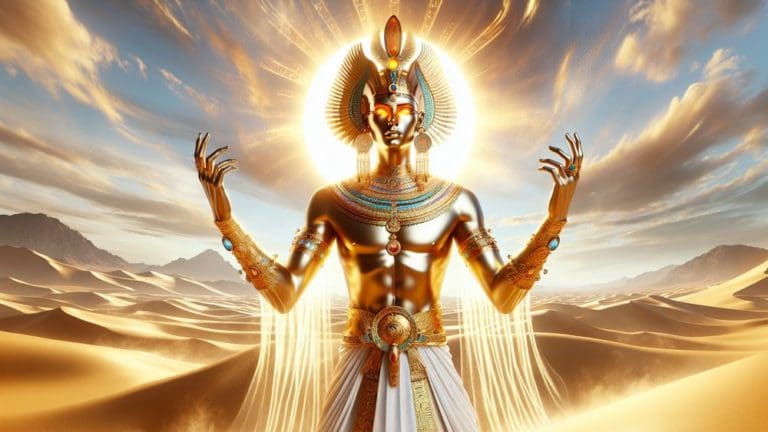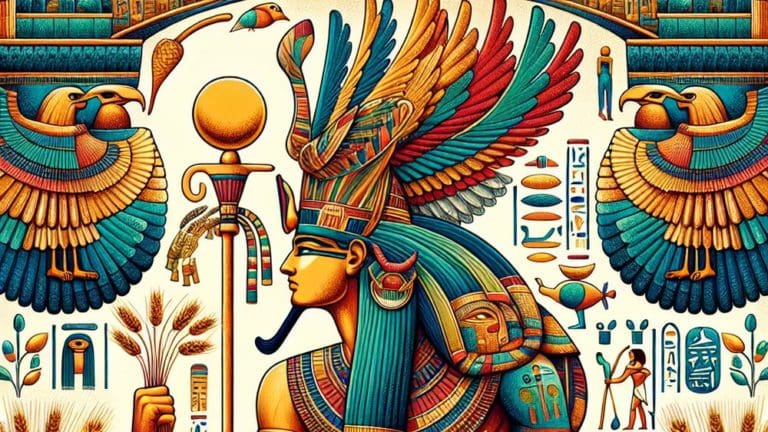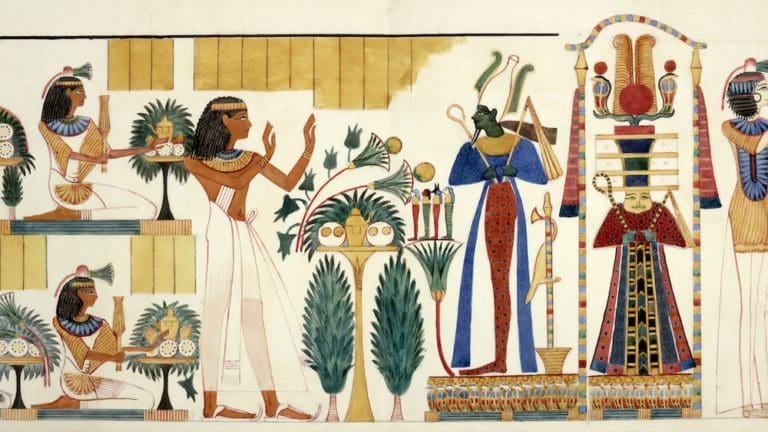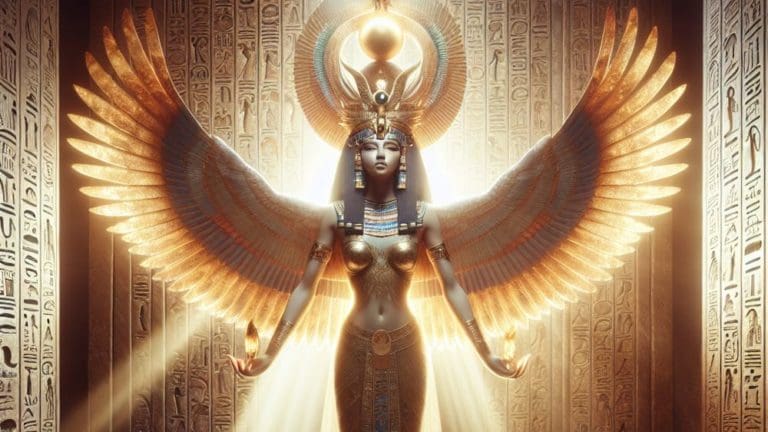Unleashing Ancient Power: Egyptian Mythology Weapons
Unleashing Ancient Power: Egyptian Mythology Weapons
Have you ever imagined walking through the sands of time, unearthing the secrets buried under the land of the pharaohs, Egypt? There’s an undeniable allure surrounding the mythical weapons that adorned the hands of gods and heroes in ancient Egyptian stories. Egyptian Mythology Weapons are not just tales; they are the embodiment of power, protection, and divine justice that have captivated both historians and enthusiasts alike. With each artifact, a piece of history whispers the tales of battle, glory, and the mystical world of ancient deities.
Key Points:
- Egyptian Mythology Weapons symbolize power, protection, and divine justice.
- The Khopesh, a curved sword, represents royalty and divine authority.
- The composite bow showcases Egyptian technological prowess in archery.
- Chariots introduced by the Hyksos revolutionized Egyptian warfare tactics.
- Weapons in Egyptian mythology carry immense symbolic significance and power.
- Protective amulets and magical weapons were valued for their spiritual significance.
- Egyptian Mythology Weapons offer a glimpse into ancient values, beliefs, and aspirations.
The curiosity to explore these legendary weapons drives us closer to understanding the complex mythology and the advanced warfare strategies of ancient Egyptians. Whether it’s a symbolically powerful spear of Ra or the curved blade of the Khopesh, these weapons tell a story of innovation, power, and fearlessness. As we embark on this journey together, let’s unravel the mysteries that these ancient weapons hold and discover how they shaped the course of Egyptian history.
The Legendary Arsenal of Egyptian Deities
The pantheon of Egyptian mythology is renowned for its unique arsenal of weapons, each carrying divine power and significance. From the sharp curve of the Khopesh to the formidable chariots of war, these weapons were not merely tools of battle but symbols of the gods’ protection and favor upon the land of Egypt. Let’s delve deeper into the legendary arsenal and uncover the stories behind these mythical weapons.
The Khopesh: Sword of the Pharaohs
The Khopesh, known as the sword of the pharaohs, stands out as a symbol of royalty and divine power. Its unique design, featuring a curved blade, was not only a statement of aesthetic beauty but also a lethal weapon on the battlefield. The Khopesh was often crafted from bronze, combining both the functions of an axe and a sword to deliver fatal blows to the enemy.
- Design: Curved blade for hooking and slashing
- Material: Predominantly bronze
- Usage: Close combat and ceremonial
- Significance: Symbol of power and divine authority
This powerful weapon was frequently depicted in the hands of deities and pharaohs alike, signifying their ability to protect and conquer. The craftsmanship and materials used in the making of the Khopesh reflect the advanced metalworking skills of ancient Egyptians, further highlighting their sophistication in warfare and weaponry.
The Khopesh symbolized power and divine authority, showcasing advanced metalworking skills and sophistication in ancient Egyptian warfare.
The Divine Bow: Archery in Egyptian Mythology
The bow in Egyptian mythology is often associated with precision, power, and range, making it a revered weapon among gods and mortals. The composite bow, a significant advancement in technology, allowed the Egyptians to assert their dominance over distant foes, striking with accuracy and speed.
- Design: Composite construction for increased power
- Range: Extended shooting distance
- Usage: Hunting and warfare
- Significance: Mastery over the enemy and the animal world
By incorporating composite materials like wood, sinew, and animal horn, the ancient Egyptians were able to construct bows that were both flexible and powerful, a revolutionary design in the world of archery. This weapon not only showcased their technological prowess but also their strategic understanding of combat and battlefield dynamics.
Chariots of the Gods: The Role of Chariots in Warfare and Myth
The chariot, a two-wheeled vehicle drawn by horses, served an integral role in both mythology and warfare. It symbolized speed, power, and divine intervention, often depicted as the transport of gods and royalty. Chariots revolutionized military tactics of ancient Egypt, providing mobility and a strategic advantage over foot soldiers.
| Aspect | Detail |
|---|---|
| Origin | Introduced to Egypt by the Hyksos |
| Construction | Combination of wood and leather for lightness and speed |
| Crew | Typically manned by a driver and an archer |
| Strategy | Utilized for fast assaults and retreats, breaking enemy formations |
| Symbolism | Represented royal power and divine protection in myths and battles |
With the introduction of the chariot by the Hyksos, the Egyptians adapted and refined this weapon of warfare to fit their tactical needs, carving a niche for it within their arsenal. The chariot became synonymous with victory and power, leaving an indelible mark on the history of combat and the stories of gods woven into the fabric of Egyptian mythology.

The chariot symbolized speed, power, and divine intervention in Egyptian mythology and warfare, revolutionizing military tactics and becoming synonymous with victory and royal power.
Symbolism and Power: Weapons in Egyptian Mythology
In the realm of Egyptian mythology, weapons were not just tools of warfare; they were imbued with immense symbolic significance and power. Each weapon carried with it tales of divinity, protection, and the order of the cosmos.
Through the divine arsenal, the Egyptians expressed their values, beliefs, and aspirations for harmony and victory over chaos. These legendary weapons offer a fascinating glimpse into the ancient world, where the material and the mythical intricately intertwined.
The Spear of Ra: Symbol of Solar Power
The Spear of Ra holds a unique position in Egyptian mythology. It isn’t just a weapon; it’s a symbol of the sun’s power, piercing through the darkness to protect the world from chaos.
- Imbued with solar energy, the spear was believed to possess the fiery essence of Ra, the sun god.
- According to mythology, this weapon could obliterate enemies with the fierceness of the midday sun.
- Priests and pharaohs would often invoke the Spear of Ra in rituals to harness its divine protection.
The Mace of Horus: Emblem of Kingship and Protection
The Mace of Horus is steeped in symbolism, representing both kingship and divine protection. This weapon was not merely a tool for physical combat but a sacred emblem wielded by the gods themselves.
- Crafted from precious materials, the mace symbolized Horus’s victory over chaos, embodying law and order.
- Kings of Egypt often portrayed themselves wielding the mace in art and inscriptions, highlighting their divine right to rule and protect the land.
Protective Amulets and Magical Weapons
The ancient Egyptians valued amulets and magical weapons for their protective powers and spiritual significance. These items were believed to shield the wearer from harm, bring good fortune, and ward off evil spirits.
| Amulet/Weapon | Material | Purpose |
|---|---|---|
| Scarab | Gold, Faience | Symbol of rebirth, protection against evil |
| Eye of Horus | Lapis Lazuli | Health, safety, and protection from the enemy |
| Djed Pillar | Wood, Bronze | Stability, strength, and endurance |
| Ankh | Gold, Silver | Eternal life, healing powers, and protection |
These sacred objects played a crucial role in both the daily lives and the afterlife beliefs of the ancient Egyptians. Through intricate design and symbolism, they connected the physical world to the divine, offering protection and guidance to those who held them.

Ancient Egyptian sacred objects like amulets and magical weapons provided protection, guidance, and connection to the divine through intricate design and symbolism.
FAQs
1. What role did weapons play in Egyptian mythology?
In Egyptian mythology, weapons were not just tools of war but were imbued with significant symbolic meaning. They represented power, protection, and the authority of the gods.
2. How did the Khopesh influence Egyptian warfare?
The Khopesh greatly influenced Egyptian warfare by introducing a versatile weapon that could be used for slashing and hooking enemy shields or armor, changing the dynamics on the battlefield.
3. Can you name a weapon associated with a specific Egyptian deity?
A weapon closely associated with an Egyptian deity is the spear of Ra, symbolizing the sun god’s absolute power and his ability to protect and destroy.
4. Were chariots used only for warfare in ancient Egypt?
Chariots in ancient Egypt were not exclusively used for warfare; they also played a role in hunting, ceremonies, and as a display of wealth and status.
Conclusion
The exploration of Egyptian Mythology Weapons uncovers a fascinating blend of military innovation, religious significance, and cultural practices that continue to captivate history enthusiasts and amateur archaeologists alike. It highlights how ancient Egyptians harnessed the power of their deities, imbuing weapons with a deeper meaning that transcended their practical use in combat. To delve deeper into the mysteries of the past and uncover more secrets of Egyptian mythology weapons is to connect with an ancient world where weapons were a key part of rituals and everyday life. Thank you for joining me on this exciting journey; I can’t wait to see what other secrets we can uncover together. Until next time, stay curious and keep exploring the mysteries that history has to offer.
Warm regards, Cedric

